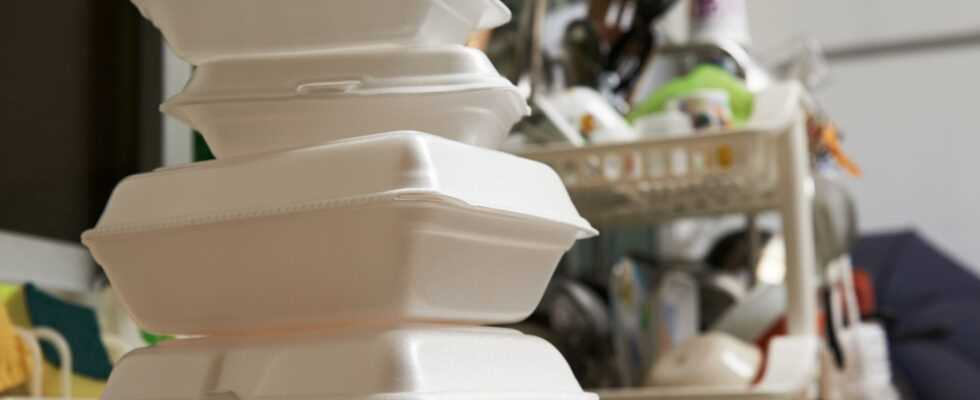With a new process for recycling plastic, polystyrene – the main component of polystyrene – can be broken down into valuable small molecules. The technique requires only light, air and the simple molecule iron chloride, report Sewon Oh and Erin E. Stache from Cornell University in Ithaca, New York. As they report in the “Journal of the American Chemical Society”, they dissolved polystyrene in the commonly used solvent acetone together with iron chloride and atmospheric oxygen and irradiated the mixture with white light for 20 hours. In the process, the long molecular chains of the plastic disintegrated into their individual parts, mostly benzene rings with an attached group of carbon and an oxygen and various other atoms. These benzoyl compounds are important raw materials for many chemical processes.
The method developed by Oh and Stache is based on the decomposition of the polymer chains with the help of chlorine radicals and oxygen. The light breaks the bond between chlorine and iron, creating chemically very reactive chlorine atoms. These snatch hydrogen atoms from the molecular chains of the polystyrene at those points where the building blocks of the polymer are linked. This in turn means that oxygen attacks there and breaks down the chain molecule into its basic building blocks. According to the experts, the process is very efficient, the most important product being benzoic acid, a raw material in the chemical industry that is also used to preserve food.
The technique reveals a potentially significant path to the sustainable recycling of plastics. While most recycling processes result in material degradation due to shorter polymer chains and limited processing techniques, reclaimed building blocks can be used to create new products. Such processes that recover economically important raw materials are referred to as upcycling – in contrast to downcycling, which produces inferior materials that are only usable for a few applications. Such techniques make the recycling of plastics much more attractive.
